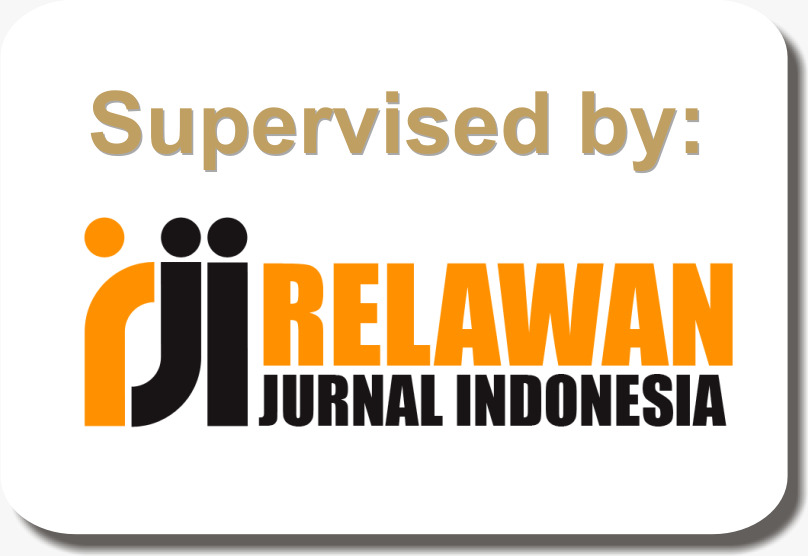Acalypha Indica: Pemanfaatan dan Bioaktivitasnya
DOI:
https://doi.org/10.30599/jti.v11i2.478Keywords:
Acalypha indica, anti mikroba, flavonoid, alkaloidAbstract
Acalypha indica (AI) atau yang dikenal dengan nama daun anting-anting telah lama digunakan masyarakat Indonesia sebagai obat tradisional. Pemanfaatan tumbuhan sebagai obat tradisional berhubungan dengan kandungan metabolit sekunder dan bioaktivitasnya. Penulisan artikel ini didasarkan pada kajian literatur yang diperoleh dari jurnal ilmiah yang terbit secara online maupun offline, sehingga diperoleh informasi yang komprehensif mengenai bioaktivitas AI. Sebagai obat tradisional AI digunakan untuk obat kolesterol dan rematik. Kandungan metabolit sekunder AI berupa saponin, flavonoid, steroid, fenol, alkaloid, tanin, dan glikosida jantung. Bioaktivitas AI antara lain: anti mikroba, antioksidan, anti diabetes melitus, anti kanker, anti stroke dan meningkatkan kualitas sperma. Aktivitas anti mikroba AI berhubungan dengan kandungan flavonoid dan alkaloid. Mikroba merupakan salah satu penyebab keracunan makanan, oleh karena itu bioaktivitasnya AI sebagai anti mikroba berpotensi sebagai pengawet makanan.
Downloads
References
Achmad, S.J., Syah,Y.M., Hakim, E.H., Juliawaty, L.D., Makmur, L. dan Mujahidin, D. (2008). Ilmu kimia dan kegunaan tumbuh-tumbuhan obat Indonesia, Institut Teknologi Bandung, Bandung, viii + 350 hlm.
Alam, A.N., Bintari, S.H. and Mubarok, I. (2017). penentuan konsentrasi minimum ekstrak daun anting-anting (Acalypha indica L.) sebagai antibakteri pada Staphylococcus aureus. Life Science 6(1): 34-39.
Amarnath, K., Dhanabal, J., Agarwal, I., & Seshadry, S. (2014). Cytotoxicity induction by ethanolic extract of Acalypha indica loaded casein-chitosan microparticles in human prostate cancer cell line in vitro. Biomedicine & Preventive Nutrition, 4(3), 445-450. https://doi.org/10.1016/j.bionut.2013.03.009
Barman, K.L., and Jha, D.K. (2013). Comparative chemical constituents and antimicrobial activity of Normal and organic ginger oils (Zingiber officinale Roscoe). International Journal of Applied Biology and Pharmaceutical Technology 4(1): 259-266.
Batubara, I., Wahyuni, W.T. and Firdaus, I. (2016). Utilization of Anting-Anting (Acalypha indica) Leaves as Antibacterial. IOP Conf. Series: Earth and Environmental Science 31: 1-6. http://doi.org/10.1088/1755-1315/31/1/012038
Chekuri, S., Panjala,S., and Anupalli,R.R. (2017). Cytotoxic activity of Acalypha indicaL. hexane extract on breast cancer cell lines (MCF-7). The Journal of Phytopharmacology 6(5): 264-268.
Chekuri, S., Jyoti,A., Sompaga, S., Panjala,S., and Anupalli, R.R. (2018).Evaluation of anti microbial and anti fungal activity of Acalypha indica L., leaf extract. International Journal of Pharmacognosy and Phytochemical Research 10(1): 48-51.
Farida, S., Krisnamurti, D. G., Mudjihartini, N., Purwaningsih, E. H., Sianipar, I. M., & Lisnawati, L. (2018). The combination of Acalypha indica–Centella asiatica extracts decreases the neuronal damage in hypoxia-induced hippocampal injury animal model. Medical Journal of Indonesia, 27(3), 137-44. https://doi.org/10.13181/mji.v27i3.1697
Govindarajan, M., Jebanesan, A., Reetha, D., Amsath, R., Pushpanathan, T. and Samidurai, K. (2008). Antibacterial activity of Acalypha indica L.European Review for Medical and Pharmacological Sciences 12: 299-302.
Huaxing, Q. and Gilbert, M.G. (2008). Acalypha Linnaeus, Sp. Pl. 2: 1003. 1753. Fl. China 11: 251-255.
Kavitha, S., Kovan, T.K. and R.V. Bharathi. (2009). In vitro antioxidant and anticancerstudies on the leaf of Acalypha indica. Biomedical & Pharmacology Journal 2(2): 431-435.
Jagatheeswari, D., Deepa, J., Ali, H.S.J. and Ranganathan, P. (2013). Acalypha indica, L. an important medicinal plant: a Review of its traditional uses, and pharmacological properties. Int J Res Botany 3(1): 19-22.
Masih, M., Banerjee, T., Banerjee, B. and Anita, P.A.L. (2011). Antidiabetic activity of Acalypha indica Linn. on normal and alloxan induced diabetic rats. International Journal of Pharmacy and Pharmaceutical Sciences 3(3): 1-4
Nkumah, O.C., Esther, A.E., Adimonyemma, R.N., Cletus, N.O. and Iroka, C.F. (2016). Preliminary phytochemical screening on the leave, stem and root of Acalypha Indica The Pharmaceutical and Chemical Journal 3(3): 8-1.
Noriko, N. (2013). Potensi daun teh (Camellia sinensis) dan daun anting-anting Acalypha indica L. dalam menghambat pertumbuhan Salmonella typhi. Jurnal Al-Azhar Indonesia Seri Sains Dan Teknologi 2(2): 104-110.
Rajaselvam, J., Benila Smily, J.M. and Meena, R. (2012). A study of antimicrobial activity of Acalypha indica against selected microbial species. International Journal of Pharma Sciences and Research 3(9): 473-476.
Ravi, S., Shanmugam, B., Subbaiah, G.V., Prasad, S.H., and Reddy, K.S. (2017). Identification of food preservative, stress relief compounds by GC–MS and HR-LC/Q-TOF/MS; evaluation of antioxidant activity of Acalypha indica leaves methanolic extract (in vitro) and polyphenolic fraction (in vivo). J Food Sci Technol 54(6): 1585-1596. https://doi.org/10.1007/s13197-017-2590-z
Sanseera, D., Niwatananun, W., Liawruangrath, B., Liawruangrath, S., Baramee, A., Trisuwan, K. and Pyne, S.G. (2012). Antioxidant and anticancer activities from aerial parts of Acalypha indica Linn. CMU. J. Nat. Sci. 11(2): 157-166.
Silalahi, M., Nisyawati, Walujo, E.B., Supriatna, J., and Mangunwardoyo, W. (2015). The local knowledge of medicinal plants trader and diversity of medicinal plants in the Kabanjahe traditional market, North Sumatra, Indonesia. Journal of Ethnopharmacology 175: 432-443. https://doi.org/10.1016/j.jep.2015.09.009
Teklani, P.W.N.N. and Perera, B.G.K. (2016). The important biological activities and phytochemistry of Acalypha indica. Int J Res Pharm Sci 6(1): 30-35.
Yasmin, C., Eriani, K. and Sari, W. (2010). Pengaruh pemberian ekstrak etanol akar anting-anting (Acalypha indica L.) terhadap kualitas spermatozoa mencit. Jurnal Kedokteran Yarsi 18(1): 29-37.
Yolanda, S., Bachtiar, E.W. and Ibrahim, N. (2011). Increased cell viability and proliferation in post-hypoxic hippocampal tissueculture treated with Acalypha indica root extract. Med J Indones. 20: 94-9. https://doi.org/10.13181/mji.v20i2.433
Zahidin, N.S., Zulkifli, R.M., Muhamad, I.I., Ya’akob, H., Nur, H., Shariff, A.H.M. and Saidin, S. (2018). Preliminary Study of Potential Herbal Tea, Acalypha indica and Comparison with Domestic Tea in Malaysia Market. Food Science and Technology 6(1): 41-45.









